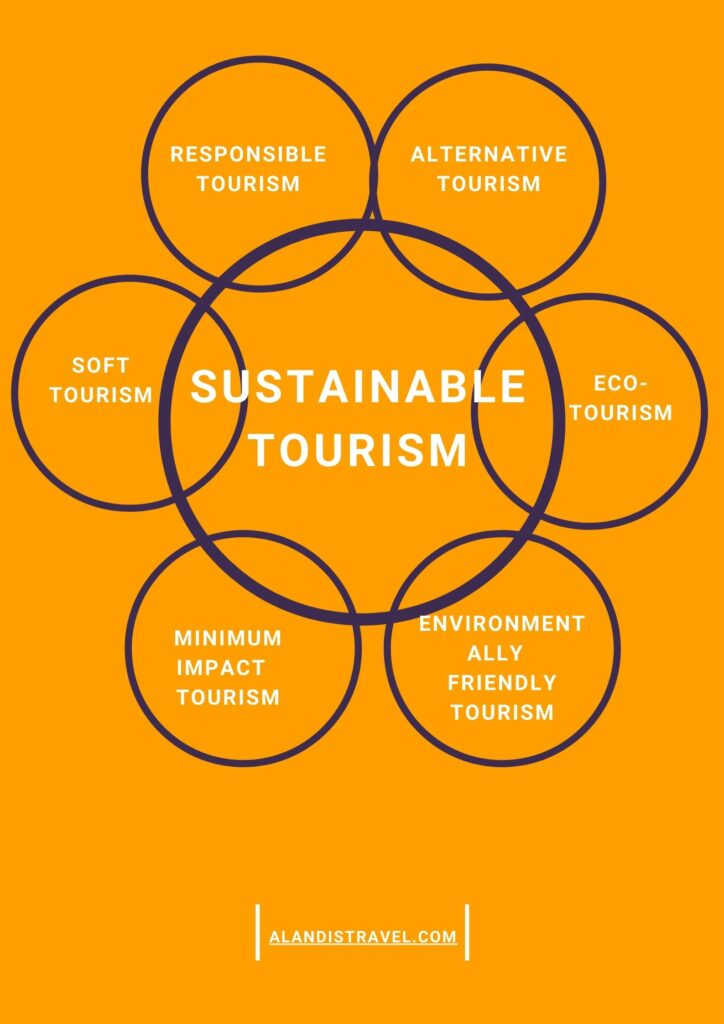Ecotourism Essentials: Key Features for Sustainable Travel

Understanding the Impact of Travel
Traveling is a transformative experience. It broadens our horizons, introduces us to new cultures, and enriches our understanding of the world. However, with the rise in tourism comes the potential for negative impacts on the environments we visit. Understanding these impacts is the first step toward fostering responsible tourism. When considering the effects, we delve into three primary areas:
- Environmental Impact: The physical presence of tourists can lead to pollution, habitat destruction, and disruption of wildlife.
- Social Impact: Cultural practices can be influenced or lost due to the commodification of local traditions for tourist consumption.
- Economic Impact: While tourism can bolster local economies, it can also lead to income inequality and the exploitation of local resources for profit.
🌍 Note: While travel offers immense benefits for education and cultural exchange, we must consider its potential downsides to make travel sustainable and beneficial for all parties involved.

Defining Ecotourism
Ecotourism is a subset of sustainable travel that focuses on environmental conservation and the well-being of local communities. Here are some key features of ecotourism:
- Environmental Education: Ecotourists are often educated about the local environment and the importance of conservation efforts.
- Low Impact: Activities are designed to minimize physical impact on nature and to preserve the habitat.
- Support for Conservation: A portion of the revenue generated from ecotourism is typically reinvested into local conservation projects.
Key Features of Ecotourism
To make the most out of your ecotourism experience and contribute positively to the destinations you visit, consider the following key features:
1. Community Involvement

Ecotourism focuses on involving local communities in the tourism process. This involvement can take several forms:
- Participation in Decision-Making: Local stakeholders should have a say in how tourism in their area is developed.
- Equitable Benefit Sharing: Profits should be distributed fairly, ensuring local communities benefit economically.
- Promotion of Local Culture: Cultural activities should be presented in an authentic and respectful manner.
2. Environmental Sustainability
An ecotourism venture must be dedicated to:
- Resource Conservation: Using renewable energy sources, reducing waste, and conserving water.
- Habitat Protection: Efforts to preserve natural habitats and not disturb wildlife.
- Reduction of Carbon Footprint: Encouraging means of transport with lower emissions and offsetting carbon usage.

| Feature | Benefits |
|---|---|
| Energy Conservation | Reduces greenhouse gas emissions |
| Waste Management | Prevents environmental pollution |
| Water Conservation | Preserves local water resources |
3. Educational Aspect
The educational component is crucial in ecotourism:
- Nature Interpretation: Guides provide insights into the local ecosystem, species, and conservation efforts.
- Cultural Immersion: Learning about the culture, history, and traditions of the area you're visiting.
- Outreach Programs: Engaging tourists in activities that educate about environmental issues.
🚸 Note: Education within ecotourism does not just enhance the visitor experience but also fosters an understanding and respect for nature and cultures that can lead to long-term sustainable practices.
4. Ethical Considerations
Ecotourism embraces a set of ethical guidelines:
- Respect for Nature: Adhering to rules that minimize disruption to wildlife.
- Fair Wages: Ensuring local workers are paid fairly for their contributions.
- Minimal Intrusion: Accommodations and activities are low-impact and often situated away from sensitive areas.
5. Economic Sustainability
While not just about profit, ecotourism does aim to:
- Support Local Economy: Creating jobs and investing in local businesses.
- Long-Term Planning: Ensuring tourism benefits remain sustainable over time.
- Fair Trade: Promoting products and services that are ethically sourced from the local area.
In summary, ecotourism is about much more than just visiting natural destinations. It’s a commitment to travel that actively benefits the environment, respects and involves local communities, and educates its participants. By adhering to these key features, we can all contribute to a more sustainable travel model that not only preserves natural resources but also enriches the lives of those who call these places home.
What is the difference between ecotourism and regular tourism?
+Ecotourism emphasizes environmental conservation, community involvement, and education, whereas traditional tourism might focus more on leisure and sightseeing without such considerations for sustainability.
How can tourists ensure they’re practicing ecotourism?
+Tourists can practice ecotourism by choosing tour operators and accommodations that adhere to sustainable practices, minimizing their impact on nature, supporting local communities, and engaging in educational programs.
Does ecotourism really make a difference to the environment and communities?
+Yes, when done correctly, ecotourism can significantly contribute to both environmental conservation and community development by directing funds towards conservation efforts and providing economic benefits to local populations.
Related Terms:
- Components of ecotourism PDF
- Ecotourism is
- Ecotourism in Indonesia
- Principles of ecotourism
- What is ecotourism and example
- Types of ecotourism



